Abstract
An important question in biology is why the genetic alphabet is made of just two base pairs (G.C and A.T). This is particularly interesting because of the recent demonstration [Piccirilli, J. A., Krauch, T., Moroney, S. E. & Benner, S. A. (1990) Nature (London) 343, 33-37] that the alphabet can in principle be larger. It is possible to explain the size of the present genetic alphabet as a frozen character state that was an evolutionary optimum in an RNA world when nucleic acids functioned both for storing genetic information and for expressing information as enzymatically active RNA molecules--i.e., ribozymes. A previous model [Szathmáry, E. (1991) Proc. R. Soc. London Ser. B 245, 91-99] has described the principle of this approach. The present paper confirms and extends these results by showing explicitly the ways in which copying fidelity and metabolic efficiency change with the size of the genetic alphabet.
Full text
PDF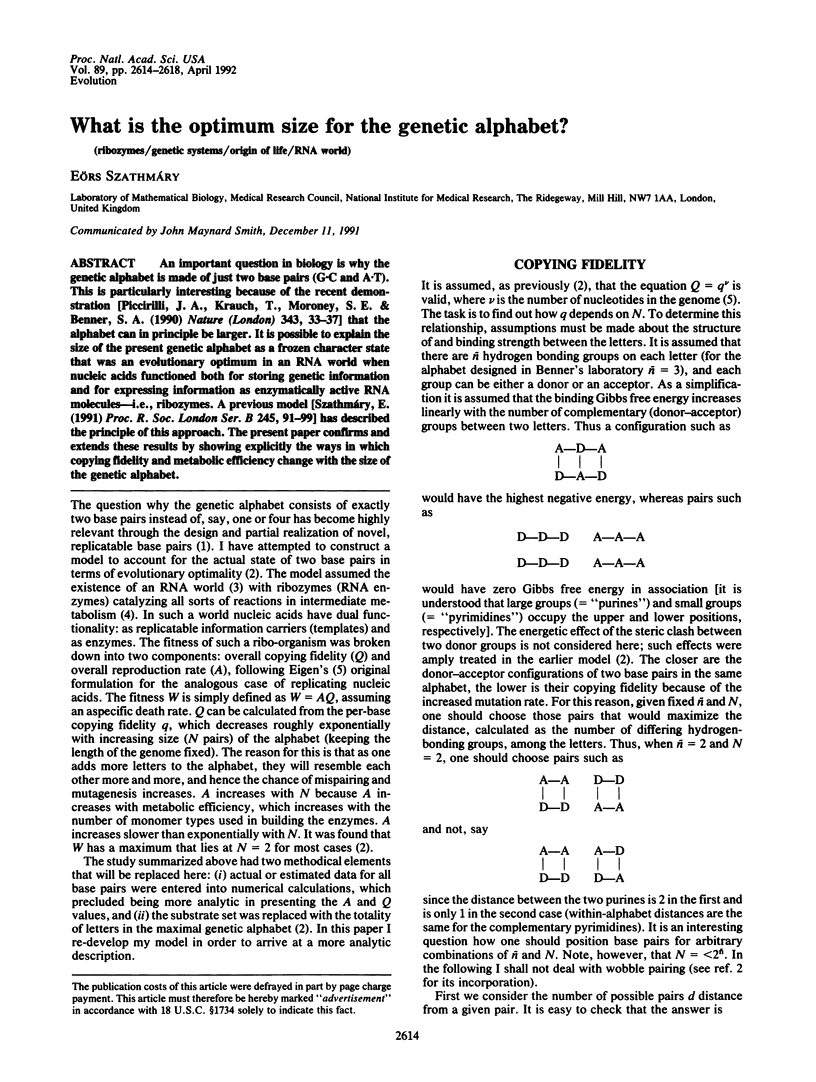
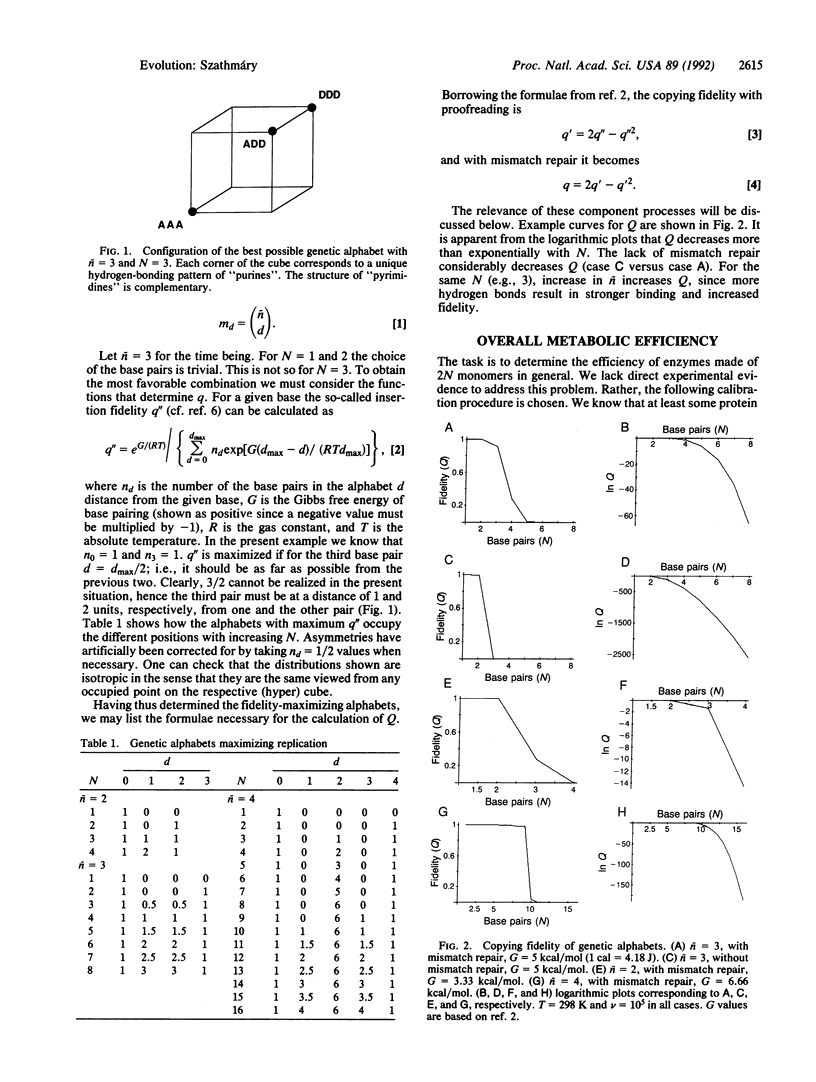
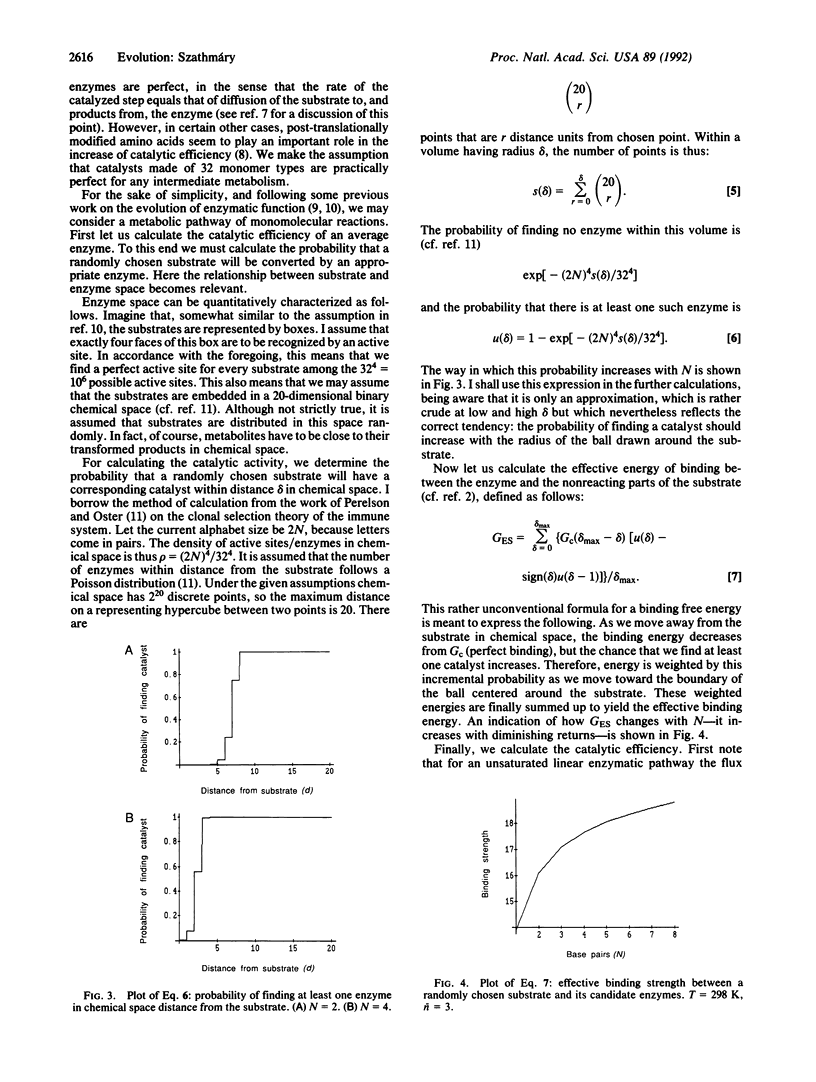
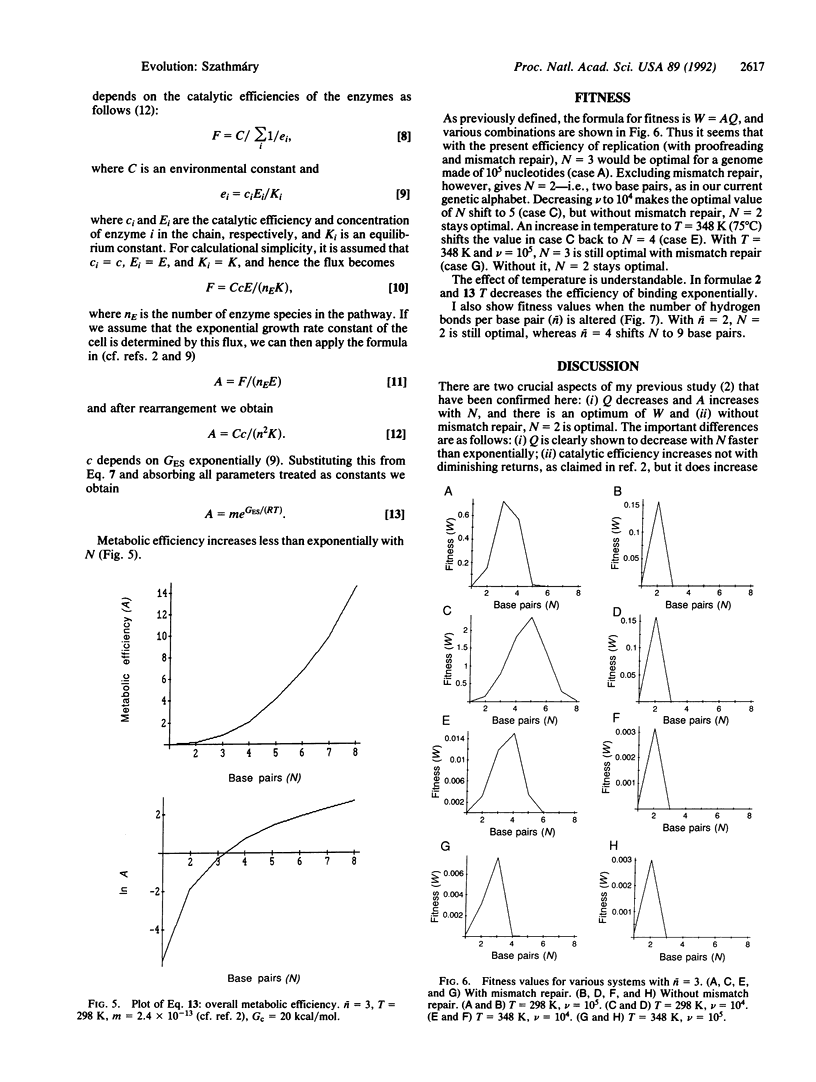
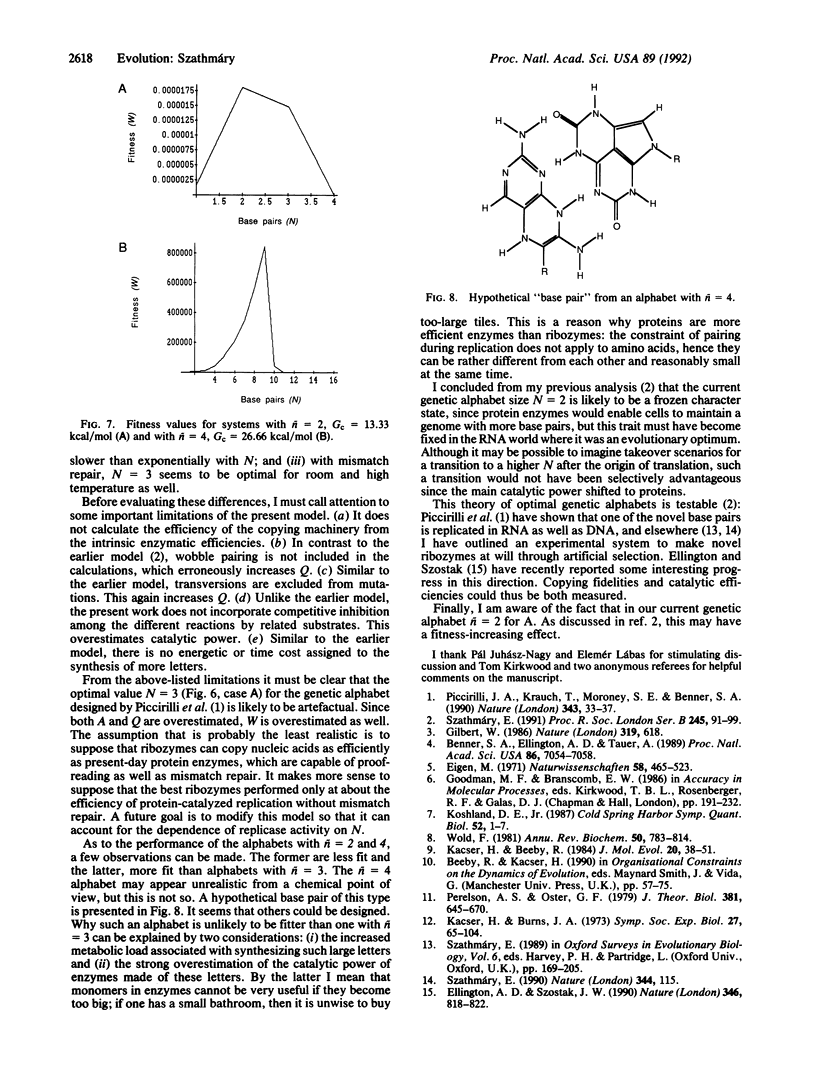
Selected References
These references are in PubMed. This may not be the complete list of references from this article.
- Benner S. A., Ellington A. D., Tauer A. Modern metabolism as a palimpsest of the RNA world. Proc Natl Acad Sci U S A. 1989 Sep;86(18):7054–7058. doi: 10.1073/pnas.86.18.7054. [DOI] [PMC free article] [PubMed] [Google Scholar]
- Eigen M. Selforganization of matter and the evolution of biological macromolecules. Naturwissenschaften. 1971 Oct;58(10):465–523. doi: 10.1007/BF00623322. [DOI] [PubMed] [Google Scholar]
- Ellington A. D., Szostak J. W. In vitro selection of RNA molecules that bind specific ligands. Nature. 1990 Aug 30;346(6287):818–822. doi: 10.1038/346818a0. [DOI] [PubMed] [Google Scholar]
- Kacser H., Beeby R. Evolution of catalytic proteins or on the origin of enzyme species by means of natural selection. J Mol Evol. 1984;20(1):38–51. doi: 10.1007/BF02101984. [DOI] [PubMed] [Google Scholar]
- Kacser H., Burns J. A. The control of flux. Symp Soc Exp Biol. 1973;27:65–104. [PubMed] [Google Scholar]
- Koshland D. E., Jr Evolution of catalytic function. Cold Spring Harb Symp Quant Biol. 1987;52:1–7. [PubMed] [Google Scholar]
- Perelson A. S., Oster G. F. Theoretical studies of clonal selection: minimal antibody repertoire size and reliability of self-non-self discrimination. J Theor Biol. 1979 Dec 21;81(4):645–670. doi: 10.1016/0022-5193(79)90275-3. [DOI] [PubMed] [Google Scholar]
- Piccirilli J. A., Krauch T., Moroney S. E., Benner S. A. Enzymatic incorporation of a new base pair into DNA and RNA extends the genetic alphabet. Nature. 1990 Jan 4;343(6253):33–37. doi: 10.1038/343033a0. [DOI] [PubMed] [Google Scholar]
- Szathmáry E. Four letters in the genetic alphabet: a frozen evolutionary optimum? Proc Biol Sci. 1991 Aug 22;245(1313):91–99. doi: 10.1098/rspb.1991.0093. [DOI] [PubMed] [Google Scholar]
- Szathmáry E. Towards the evolution of ribozymes. Nature. 1990 Mar 8;344(6262):115–115. doi: 10.1038/344115a0. [DOI] [PubMed] [Google Scholar]
- Wold F. In vivo chemical modification of proteins (post-translational modification). Annu Rev Biochem. 1981;50:783–814. doi: 10.1146/annurev.bi.50.070181.004031. [DOI] [PubMed] [Google Scholar]


